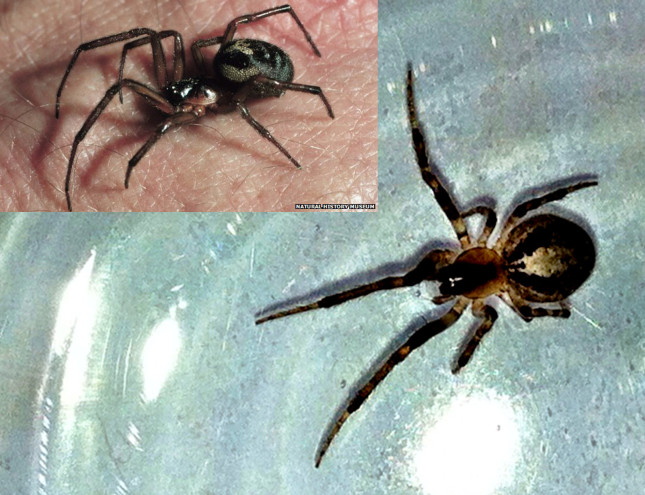There I was this morning, sitting in bed reading the news, like you do. I was aware that there was a little spider, no bigger than a 5 pence piece lurking on the valance above the window, but I’d already decided to ignore it until I got up. But then [I read this story about a school closure in Gloucestershire](http://www.bbc.co.uk/news/uk-england-gloucestershire-24623652) which made me look again. After closer inspection and tossing the little bugger in a glass, I was able to get a good enough picture with the iPhone to have a good close inspection.
It certainly looks a lot like the image and description (size, colour, markings), and is alleged to be Britain’s most venomous spider, but then that may well be the case, but it might not actually be venomous in the terms that tends to conjure up. Now given that the reference picture from the Natural History Museum clearly shows a human holding the thing in its hand, its hardly likely to be too troublesome, but there there reports of people suffering problems as a result of a bite, so one good reason to keep clear.
This one was taken a suitable distance from the van and released into the wild.





This isn’t one of the steatoda species that are known as ‘false widows’, it’s a very common missing sector orb-weaver spider (zygiella x notata). Orb weavers are the family of spiders that make the traditional spider webs, usually outdoors.
The most well known is the ‘Garden Spider’ (Araneus diadematus), which you could easily find in your garden, along with the Walnut Orb-weaver (Nuctenea umbratica).
Steatoda species are in a different family of spiders (Theridiidae) they will make tangled, messy net-like webs usually low down in sheltered places (such as under kitchen cupboards). The females will often guard or be near their egg sacs (from which 50-100 tiny spiderlings will hatch from after a couple of months).
Spiders are great hunters, and will prey upon almost anything that they catch in their web, including other spiders & pests.
They are very timid, if you disturb them in any way they will retreat to the corner of their web (usually hidden) or drop and of the web and run for it. Like most creatures, they might possibly bite if squashed or squeezed between the fingers or against skin.
They are not dangerous to humans, the media completely sensationalise everything for the sake of paper sales and advertising hits on their web pages.
Almost all spiders are use venom to subdue their prey.
The cases that were publicised by red-tops had NO PROOF whatsoever of the spider ‘bites’ and were almost certainly infected insect bites.
I have received antibiotics on two occasions myself due to inflected bites at work which causes my lower leg & foot to swell to the point it looked like it would burst. This could be troublesome perhaps for a person with health problems.
Wow, great response! Thanks for the clarification, I’ll sleep more easily now!